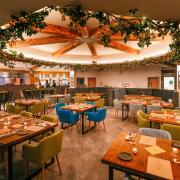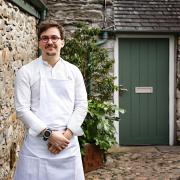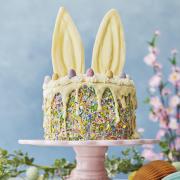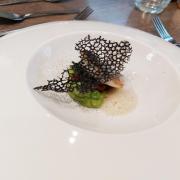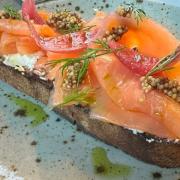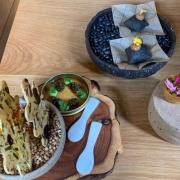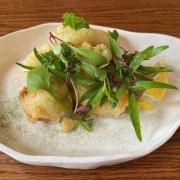Much of the produce used in Moor Hall’s multi-award winning kitchens is grown just yards away in their beautiful walled garden.

The refurbishment of Moor Hall was rather more extensive and time-consuming than chef patron Mark Birchall had anticipated. The over-running of the multi-million pound renovation work meant the Aughton restaurant's opening date had to be put back a couple of times. But since the doors were opened, in 2017, everything has gone rather ahead of schedule. In just two years they have been awarded two Michelin stars and earlier this summer they were crowned the UK's best restaurant - a leap from sixth on the list last year.
And while Mark and his team in the kitchen have received most of the plaudits, not all their success is down to what goes on indoors.
Much of the produce that has been wowing diners since the opening night was grown just yards from their tables in the Moor Hall walled garden.
Head gardener Catherine Butters initially trained as a graphic designer and worked as chef before swapping kitchen knives for garden forks. And her experience in the kitchen means she understands what head chef Mark Birchall needs her supply.

The pair meet each winter to discuss what to grow for the coming season and she gives Mark a produce list every month letting him know what will be ready for harvesting so he can prepare his menu.
The garden here is beautifully laid out with formal box edged borders near the rear of the hall and a pergola newly planted with climbers leading through the garden to raised beds and cold frames all full of produce in various stages.
In the glasshouse Catherine has sown seeds in small trays so when they sprout there is no need to prick out and it makes it easier when planting out in the beds and also provides an earlier crop. Seedlings are grown in succession so produce is always at perfection for the kitchen. In contrast the micro green seeds, supplied from CN Seeds, are scattered on a small seed tray topped with fine horticultural grit and, especially in winter, placed under grow lights for germination.
Many of the seeds sown here are heritage varieties and in the carrot bed ones are 'sugar snax', heritage 'purple haze' and small round ones which, together with the turnips, are all direct sown. The tops are used as a garnish, as are any thinings.

'We also grow the aptly named Oyster Leaf. It's a member of the borage family and really does taste of oyster,' Catherine said. 'It grows on gravel ground in the northern hemisphere up as far as Greenland. It is quite hard to come by and I have grown these in pots topped with grit to mimic the stony soil in its natural habitat.'
Envirofleece, held up with aluminium hoops with stones placed on the wooden edges to prevent it blowing off, is there to stop insect invaders as the garden is organic, though not certified, this is especially needed to stop carrot fly getting in. Biological control is also used especially in the two large glasshouses, where lacewing and ladybird larvae to keep pests under control.
The open beds are mulched in the winter which helps prevent weeds and their own compost, made up of grass cuttings and waste from the kitchen is used on the cold frames and raised beds. Everything is grown from seed from Moles or Kings, both suppliers of professional quality seeds and all watering is done by hand.
The aim is to balance the garden aesthetically and to encourage guests to enjoy the outside as well as the dining experience and Catherine is happy to give them a tour.
Step-over apples and pears are trained round some of the open beds, and the original
fruit trees, including plum, greengage, quince and medlar are being cordoned up the walls, these had to be pruned right down and it takes two years for each cordon to grow before the next layer, and fruit is finally started to appear. 'It is a slow but will be worthwhile,' said Catherine. 'And we are finally nearing the top of the wall.'
Peaches are hand pollinated using a paintbrush though traditionally this was done with a rabbit tail, these together with apricots were ripening in the glasshouse and she is hoping to have a fig trained on the wall as well. Peach leaves taste of amaretto and are infused in the kitchen.
Herbaceous flowers are grown for the restaurant and some are chosen to dry for winter floral arrangements. These aren't grown from seed, with the exception of the newly created wild flower area in what was the grass garden. The restaurant doesn't use lavender in the kitchen but it is ideal for drying as long as it's gathered as soon as the flowers form which ensures it keeps it colour.
The attractive pink flowers of Sambucus Nigra are used as garnish as are the nasturtium flowers and borage, the latter of course was the traditional addition to Pimms.




